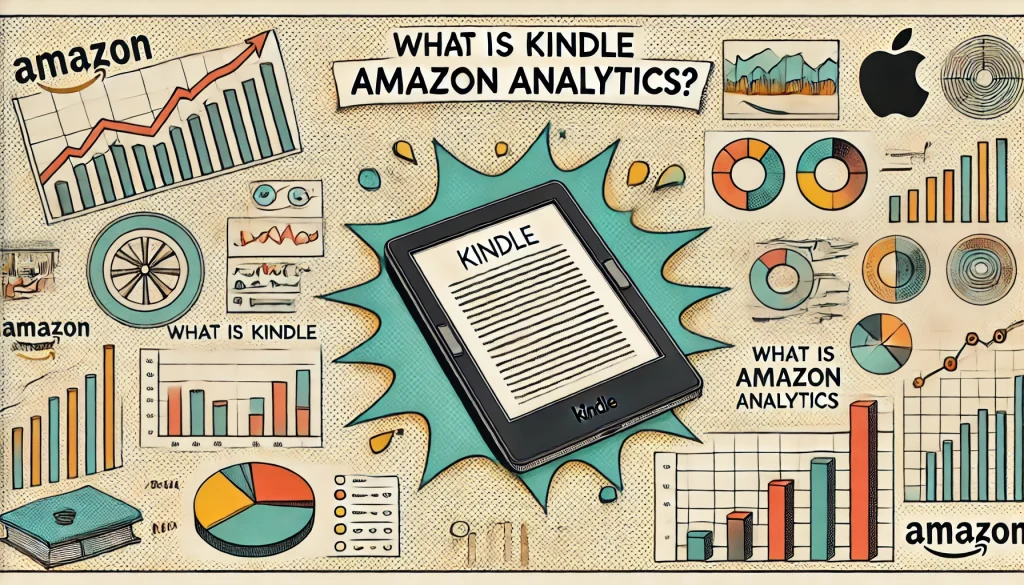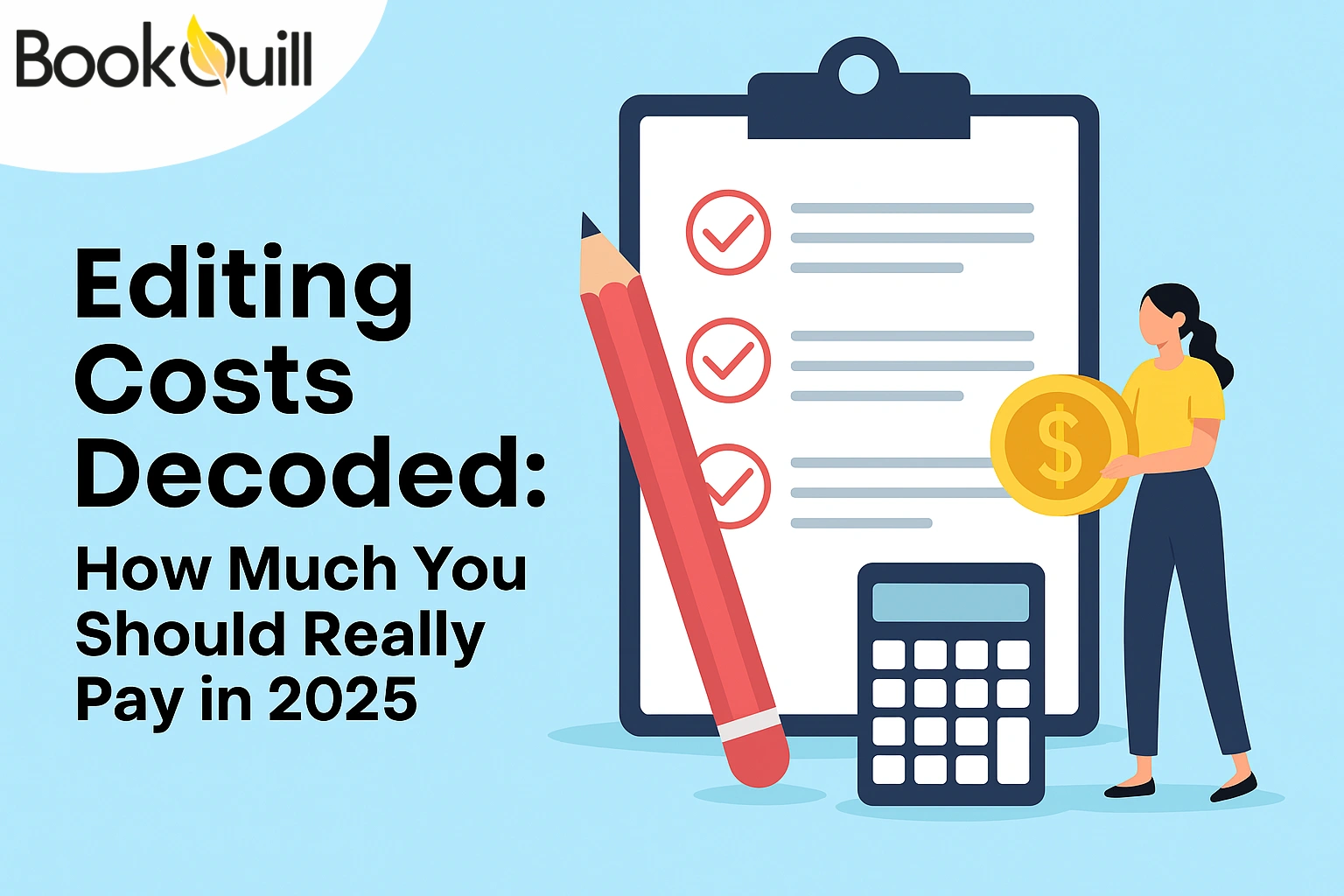Table of Contents
Explore Blogs
Trending on Ebook
Maximizing Profits with Amazon Kindle Analytics

Amazon Kindle has transformed the way authors reach readers and make a profit. With Kindle Direct Publishing (KDP), the publishing door is wide open, but navigating it successfully means understanding the numbers behind your book’s performance.
Amazon Kindle Analytics can help you interpret those numbers—it’s like having a map of insights into what’s working and what needs tweaking. But do you know how to use it? To learn how, you have to read this guide. We’ll teach you how to use it to maximize your profits, including sales data tracking, audience metrics interpretation, and every piece of data Amazon offers to help you make decisions that push your book to its fullest potential.
Takeaways
1. Tracking Sheet Template – Use this template to easily track and compare your monthly Kindle book sales, helping you spot trends and measure growth.
2. Keyword Research Guide – A mini-guide to help you find high-impact, profitable keywords to boost visibility and drive more Amazon Kindle sales.
3. Pricing Strategy Checklist – A step-by-step checklist for identifying your book’s ideal price point to maximize sales and profits.
4. Amazon Ads Starter Pack – A beginner-friendly guide to setting up Amazon ads, perfect for boosting Kindle sales without overspending.
5. Reader Engagement Checklist – Tips to help you engage readers, improve book retention, and ultimately increase Kindle sales performance.
6. Goal-Setting Workbook – A workbook to create and track specific, data-driven goals tailored for success in Kindle Amazon publishing.
What Is Kindle Amazon Analytics?
It is a tool provided by Amazon to help authors and publishers monitor their Kindle sales, reader engagement, and more. It is your assistant for analyzing data and keeping track of everything that’s happening with your sales on the Amazon Kindle platform.

It’s easy to access its analytics through Kindle Direct Publishing (KDP), which provides real-time insights.
Key Metrics You Need to Track
Not every data point in analytics will impact your Amazon sales. Here’s what matters most:
1. Sales Data
It is the backbone of Kindle Analytics, showing you real-time figures on how well your book is performing. Through this data, you can track total Kindle book sales across various time frames—daily, weekly, or monthly.
Observing sales trends helps you pinpoint specific patterns, such as when promotions lead to spikes or whether recent changes to your book’s price have impacted sales positively or negatively. Tracking Kindle sales data allows you to identify the most profitable periods, revealing whether certain seasons or days see more sales.
If a sudden drop in this sale occurs, this metric provides a signal to adjust your marketing or pricing strategies, keeping your book’s performance optimized at all times.
2. Page Reads (for Kindle Unlimited)
For authors enrolled in Kindle Unlimited, Page Reads is an important metric. Rather than receiving payment only for copies sold, authors earn royalties based on pages read. This metric in the Kindle sales report allows you to understand how engaging your book is—if readers are sticking with it all the way through or dropping off midway.

Page Reads can indicate if the pacing or content quality resonates with readers. A consistent rise in page reads suggests high engagement, which boosts visibility and future Kindle sales. Low page reads may signal the need for improvement in the story’s flow or appeal so that authors can make targeted enhancements for a stronger reader experience.
3. Conversion Rates
These rates reveal how well your book’s page attracts and convinces readers to make a purchase. It’s a comparison of the total number of views on your book’s page versus the number of actual sales. A low conversion rate indicates that while people are interested enough to view the book, something—perhaps the cover, title, or description—is failing to close the sale.
By keeping an eye on conversion rates, authors can refine these elements and better align their book’s marketing with reader expectations. Regularly optimizing these factors in response to conversion data can significantly improve Kindle sales and help you avoid the pitfalls of a poorly marketed book that doesn’t appeal to its target audience.
4. Audience Data
This data provides insights into who your readers are, where they’re located, and what devices they’re using to read your book. Knowing these details can shape more targeted advertising, personalized engagement efforts, and even the way you format your book.
For example, if most of your readers use Kindle tablets, you might optimize your book’s formatting for larger screens. Geographic data helps identify potential new markets for Amazon sales and publishing promotions of Amazon Kindle, such as running region-specific ads. Understanding audience demographics and preferences helps you launch new books or plan marketing campaigns with precision, ultimately leading to a more loyal reader base and steady growth of Amazon Kindle sales.
Setting Up Effective Tracking
To get started, set up your Kindle dashboard through KDP. Accessing this dashboard provides real-time insights into your Amazon sales, including daily, weekly, and monthly breakdowns. Regularly downloading your Kindle sales report helps you monitor trends over time and compare periods to assess any shifts in performance.
To enhance your tracking, try combining Kindle Analytics data with other marketing tools. You can bring in Amazon Author Central and other data sources to get a bigger picture of your sales and Kindle’s publishing performance.
Data-Driven Marketing Strategies to Boost Profits
Using the analytics tool is one thing, but what do you know to do with that data? That’s where you can really maximize profits. Here are key strategies to put your data analytics to work:
1. Optimize Book Descriptions and Keywords
Regulating book descriptions and keywords can make your work more visible to potential readers. Kindle tool for Analytics provides data on keyword performance that shows which search terms lead readers to your book’s page. If specific keywords aren’t delivering book sales, it might be time to adjust them for better alignment with reader searches. Experiment with long-tail keywords, which can capture niche audiences and often have less competition, giving your book a greater chance to appear in relevant searches.

Your book description should also be engaging, clear, and concise, directly addressing what makes your book unique and valuable. By periodically testing and changing your keywords and descriptions, you increase your book’s discoverability, thereby improving your Amazon Kindle sales. Utilizing keyword data from Kindle’s tool Analytics allows you to take a targeted approach, making strategic updates based on what works in the Amazon marketplace.
2. Run Targeted Ads
Using Kindle Analytics to run targeted Amazon ads is a highly effective way to boost visibility and Kindle book sales. Kindle Analytics provides insights into reader demographics, such as age, location, and reading habits, which you can leverage to create ads that reach audiences more likely to purchase. By examining the trends in your Kindle sales report, you can personalize ads to specific buyer segments, which minimizes wasted ad spending on users outside your target group.
For instance, if a particular keyword consistently attracts conversions, use it in your Amazon ads to attract similar readers. Targeted ads can be adjusted over time based on performance metrics, so don’t fear to test different ad strategies and monitor their success through Kindle Analytics. By refining your ad campaigns based on concrete data, you can increase Kindle book sales while reducing costs and reaching the right readers with greater precision.
3. Experiment with Pricing
Price experimentation can determine what readers are willing to pay and maximize Amazon Kindle sales. Amazon Analytics tool Kindle can show you the impact of price changes on sales volume, enabling you to find an optimal price point. Testing a limited-time discount, for example, can drive a surge in purchases and improve your book’s ranking, which in turn boosts visibility.
Additionally, you may find that higher or lower prices work better depending on the season, genre, or recent reader reviews. By tracking these changes in your Kindle sales report, you can gain insights into what price attracts the most readers without compromising profits. Strategic pricing, backed by data from the Kindle tool of Analytics, allows you to experiment without risk—adjusting prices based on real-time data to understand your audience’s willingness to pay, which ultimately helps increase both revenue and book sales.
Improve Reader Engagement with Audience Data
Reader demographics give you valuable insights. Are most of your readers in the U.S.? Or maybe they’re more concentrated in Europe? Knowing this helps you tailor marketing efforts. You can also see what types of devices readers are using, such as Kindle tablets, phones, or computers. Readers’ device usage can guide you in making formatting choices.
Like, if a person is reading your book on a phone, the text and images need to be optimized for a smaller screen. This can influence how you market your book and which formats you choose for Amazon print-on-demand services.
Ensuring your book is accessible and readable across all devices can enhance the reader experience and potentially boost your sales. Reviews in Kindle Analytics show where you’re succeeding and where you could improve. If you see recurring feedback, consider making adjustments to keep readers happy and boost book sales.
Competitor Analysis to Learn from the Best
This study can be done using Kindle Analytics. It allows authors to stay competitive and boost Amazon Kindle sales by learning from successful books in the same category. One effective strategy is identifying key genres and examining the top-performing books within them.
Observing popular books offers insights into market trends and preferred content among readers, helping you tailor your offerings. Reverse-engineering successful books—focusing on their covers, keywords, and descriptions—can reveal patterns that you can adapt for your titles without copying directly.
Elements like cover style, genre-specific keywords, and even formatting cues can enhance the market appeal of your own books. Kindle Analytics also lets you track and benchmark your book sales performance against competitors over time. This process of continuous improvement, guided by industry leaders, ensures your book remains relevant and competitive, increasing your Amazon Kindle sales potential and long-term market presence.
Advanced Strategies to Maximize Profit Margins
For authors with multiple books or high sales volume, this analytics tool can power advanced profit strategies:
1. Bundle Books
Use data to spot which books could be sold as a bundle, providing value to readers while boosting Amazon Kindle sales. By examining which of your books have performed well individually, you can identify opportunities to bundle complementary titles together. This not only appeals to readers by providing a seamless reading experience but also encourages larger purchases.
Bundling can be most effective in genres where readers tend to consume multiple related books, such as series or nonfiction topics. Data analytics of Kindle on reader behavior can help you determine which combinations are likely to succeed.
Offering a discount on bundles or an exclusive collection can also incentivize purchases, making it an attractive option for price-conscious readers. Ultimately, book bundles drive Kindle sales by providing a convenient, valuable option that encourages readers to invest more deeply in your catalog.
2. Seasonal Launches
This analytics tool shows trends across months, allowing you to plan book releases during high-traffic periods when readers are more likely to purchase. For instance, some genres see an uptick during the holiday season or the start of summer. Launching a new title or promoting an existing one during these peak times can greatly improve its visibility and impact.
This tool can also show month-to-month fluctuations, allowing you to select ideal Amazon book publishing dates with confidence. Authors who plan book releases with a seasonal strategy can capitalize on increased reader interest, positioning their titles at the top of minds during high-demand periods.
3. Cross-Promotions
Once you have book sales data, you can create cross-promotions for books with related themes, targeting readers who are likely to buy more than one of your books. With this data, you can identify common themes or genres among your top-performing books and create targeted promotions that encourage readers to explore similar titles.
For instance, if a reader buys a romance novel, promoting another book in a related genre—like a romantic thriller—could lead to a double sale. Cross-promotions can be tailored through discounted bundles, exclusive previews, or special offers on follow-up books.
Kindle Analytics helps you monitor the success of these campaigns and make adjustments as needed. By evaluating data, authors can refine their approach, ensuring that cross-promotions resonate with readers who are likely to become repeat customers, further boosting Amazon sales across their book catalog.
Measuring Success and Setting Goals with Kindle Analytics
Measuring success in Kindle book sales requires setting clear, data-driven goals that you can track and adjust over time. Kindle Analytics is ideal for establishing these goals because it provides real-time data on key performance indicators like sales figures, page reads, and conversion rates.
For instance:
- An achievable goal could be to increase your Kindle book sales by 10% over six months. To reach this target, you might experiment with pricing, keywords, or promotional campaigns, all while monitoring the impact in your Kindle sales report.
- Another common goal could be to boost page reads by 15%, particularly for Kindle Unlimited titles, by enhancing book descriptions or targeting ads toward high-engagement audiences.
When tracking progress, analyze how individual strategies contribute to these goals. If specific tactics aren’t yielding results, adjust them as necessary, keeping your focus on gradual, measurable improvements that align with long-term growth in Amazon Kindle sales.
Wrap Up
Maximizing profit after publishing your book is not easy. It requires a balanced strategy that combines data insights with creative marketing. One effective tool for this is Kindle Analytics, which helps you understand how your book is performing. You can access valuable information about your book’s sales, reader interactions, and reviews.
By using this data, you can adjust your marketing and content strategies to increase your profits. The key is to utilize both analytics and creativity to remain relevant and competitive in the ever-evolving digital landscape, ensuring long-term success.
FAQs
How does Kindle Analytics track the success of my book promotions?
Kindle Analytics tracks the impact of your book promotions by comparing sales and page reads before, during, and after a promotion. It helps you measure the effectiveness of discount offers, price changes, and ad campaigns by showing spikes or declines in your data, allowing you to optimize future promotional strategies.
What data in Kindle Analytics can help me improve my book’s conversion rate?
To improve your book’s conversion rate, focus on metrics like page views, click-through rates, and purchase rates. By tracking these, you can identify if your book’s title, cover, or description needs enhancement. Higher conversion rates indicate that the book is compelling enough for visitors to make a purchase, leading to more Kindle sales.
Can Kindle Analytics help me understand why my sales dropped?
Yes, by analyzing data such as sales trends, audience demographics, and page reads, Kindle Analytics can provide insights into why sales may have dropped. If certain factors, like a specific time frame or change in pricing, coincide with the drop, you can make adjustments like revising promotions, pricing, or marketing strategies.
How does Kindle Analytics help with international book sales?
Kindle Analytics provides data on your book’s performance across different regions, allowing you to see how well your book is performing in international markets. You can track regional sales trends and adapt your marketing strategy to cater to specific countries, maximizing your Kindle sales worldwide.
How can I track my book’s long-term performance with Kindle Analytics?
Use Kindle Analytics to monitor sales over an extended period, including monthly or quarterly reports. Tracking long-term performance helps you evaluate which marketing strategies, pricing changes and seasonal trends contribute to steady Kindle book sales so you can fine-tune your approach for consistent, ongoing success.
How can audience insights help me market my next book?
Audience insights show reader demographics like location and device type. Knowing this can guide your marketing strategy for future books, such as running region-specific ads or tailoring content to appeal to specific age groups. Understanding your readers allows you to align future releases with their preferences, increasing engagement and boosting potential Kindle book sales.
About Our Author
Hi, my name is Zachary Stone I’m a book marketing nut — or, as I like to call myself, a “Shelf Marketer.” No, I don’t sell wooden shelves; I market the books that are left forgotten on them. If you want your book to be the next bestseller, I am your go-to person. I am here to remind you that it’s not just about writing a great story — it’s about building a buzz among people with great campaigns.




